Property118 is an unregulated adviser which works in a “joint venture” with a barristers chambers called Cotswold Barristers. They promote a tax avoidance scheme aimed at buy-to-let landlords. But nobody involved appears to have any tax qualifications and in our view the scheme fails spectacularly.
This report explains the scheme, and explains why in our view, and that of the mortgage lenders’ industry body, it is likely to default the landlord’s mortgage. We also set out a detailed analysis of the serious tax problems with the structure. We are going into more technical detail than usual given the widespread promotion of this scheme in the market. Anyone who has entered into these arrangements should seek independent advice.
UPDATE: 16 September. Property118 have responded to this report. Despite having two months notice of our findings, their response contains no response to any of the points we’ve made, just assertions that their structure is fully compliant, and that HMRC and lenders have never challenged it. As we note below, we doubt the structure has ever been properly disclosed to HMRC or lenders. Now HMRC and lenders is aware of the structure we expect challenges over the coming months and years.
UPDATE: 22 September. We’ve a further report on another aspect of Property118’s planning.
UPDATE: 5 October. See also our report on Less Tax for Landlords. A different scheme, but with some commonalities; in many senses an even worse scheme than Property118’s.
UPDATE: 24 October. Mark Smith of Cotswold Barristers published a response on the s162 point, but one which does not address the key problem with the structure. We’ve updated the text below.
UPDATE: 9 November. The analysis below is of the structure Property118 intended to implement. Our review of their actual documentation reveals several critical implementation failings which means the actual position of their clients is likely significantly different, and significantly worse. We analyse this here. This means that much of what follows below is likely academic.
The sales pitch
Most buy-to-let landlords hold their properties personally. So they pay income tax at 40% or 45% on the rental income. Until 2017, their mortgage interest was deductible, meaning a result something like this:
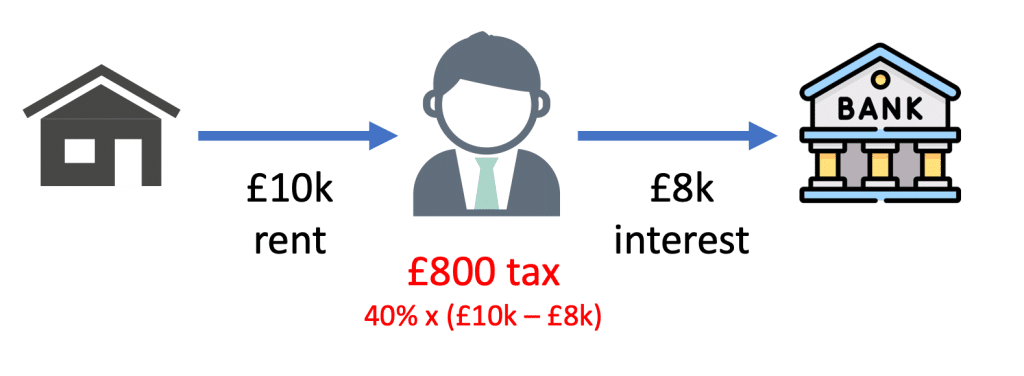
George Osborne changed that, replacing interest relief with a 20% credit. That makes a big difference:
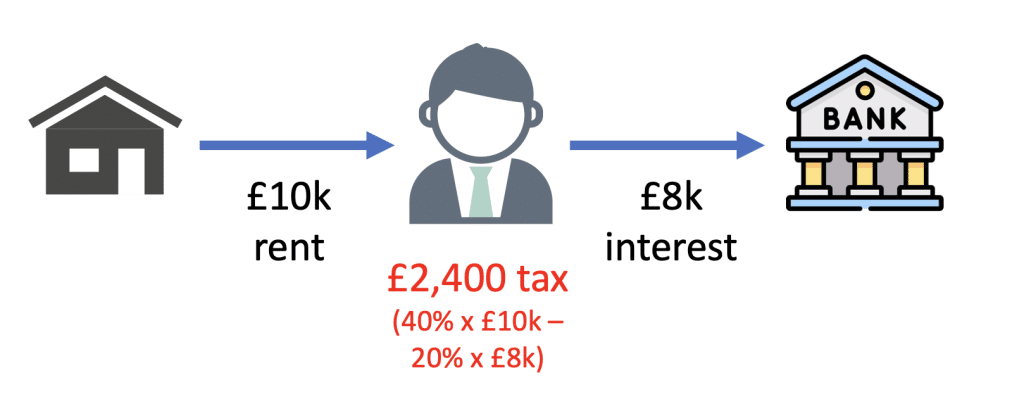
Many landlords view this as unfair, because the £2,400 tax is more than their £2,000 net income (although the purpose of the rules was expressly to discourage buy-to-let mortgages, so this rather punitive outcome is actually the point).
The obvious move is to hold the properties in a company. Corporation tax is less – below 25%, for a small company1The rate is 19% for profits under £50,000, with a “catch-up rate” of 26.5% on profits up to £250,000, so that the overall effective rate smoothly transitions into the full rate of 25% and companies get full tax relief for mortgage interest.2Obviously you will want to get the money out at some point, but being able to defer and roll up low-taxed income is valuable in itself
But it’s not easy for a buy-to-let landlord to move their properties into a company. There can be capital gains tax and stamp duty land tax (SDLT) on the way in. And – most seriously – the mortgage lender won’t allow the existing individual mortgage to move to a company. You could get a new mortgage, but mortgages for companies are significantly more expensive than buy-to-let mortgages. 3Because a landlord can walk away from a company in a way that they cannot walk away from a personal mortgage
Advisers therefore frequently caution clients that the increased interest cost of moving properties to a company can easily exceed the tax saving. It’s often a mistake to be over-focused on tax savings.
The Property118 solution
Wouldn’t it be wonderful if you had all the tax benefits of moving to a company, but could keep your existing bargain-price mortgage?
Property118 say you can, with what they call the Substantial Incorporation Structure:
- The landlord – let’s call him X – sets up a new company (which I’ll call the Company), and sells the properties to it, getting shares in return
- But “completion” of the sale is deferred – X remains the registered owner of the properties. A trust is created, with the landlord as trustee, and the company as beneficiary.
- This is invisible to the world – and to the mortgage lender. So X doesn’t ask the mortgage lender for consent, or even tell the mortgage lender about it.
- Property118 claim that, because the transaction creates a trust, it’s not a breach of X’s mortgage.
- They claim that “incorporation relief” applies so there’s no capital gains tax.
- Often they say that X and their spouse were in a partnership, so SDLT partnership rules apply and there’s no SDLT to pay either.
- X continues to make mortgage payments to the lender but, behind the scenes, the Company agrees to reimburse/indemnify X. The Company claims tax relief for those payments. So – claim Property118 – it’s just as good as if the Company had borrowed itself.
- But it’s better – because they say this isn’t just a company – it’s a “Smart Company“. The idea is that the Company issues shares to X’s children which supposedly have no initial value, but will grow in value over time. So future increase in the value of the property portfolio will fall outside X’s inheritance tax estate.
The end result is that, by signing a piece of paper, X gets a dramatically better tax result with no downside:4We have established this is their structure from published information on the Property118 and Cotswold Barristers websites (e.g. this brochure, and here, here, here, and here) as well as copies of their advice we received from our sources.

What actually happens – the short version
The structure doesn’t work.
The sale likely puts the mortgage into default. The mortgage terms usually require consent for the sale to the Company, and that wasn’t obtained.
We asked UK Finance, the trade association for mortgage lenders, and they said:
“Transferring ownership of a property into a trust without informing your lender and seeking their consent would most likely be a breach of a mortgage’s terms and conditions.”
The tax will also go badly wrong.
Property118 have forgotten that X is still there, still paying £8k to the bank, but now receiving £8k of new income in the form of the indemnity payments. Those indemnity payments are fully taxable, but the bank interest isn’t deductible for him (because X no longer has a property business; he has no basis to claim any tax relief).5This is perhaps the most likely of a number of possibilities, all discussed further below

So the structure increases the overall tax bill by 50%.
It gets worse. There is potentially also a large up-front tax hit of a large amount of CGT and SDLT when the structure is established. That could amount to hundreds of thousands of pounds.
And then an ongoing requirement to file an annual tax on enveloped dwellings (ATED) return, which is easily missed – failure to file creates late-filing penalties of £1,600 per year.
In our opinion this structure is a disaster.
We’ve set out the legal analysis of these issues in detail below.6In the interests of concision, we don’t go into one somewhat difficult point: the effect of a sale when that sale is prohibited by another contract (the mortgage). The Don King v Warren case is general authority for the proposition that such a sale will still be effective in equity, and we expect that will be the case here. However the issues are not straightforward; and if we’re wrong, and the sale is not effective in equity, then essentially nothing has happened from a tax perspective, and it’s as if the transaction never happened. No tax benefit, but also none of the unfortunate results we go into below.
Is this tax avoidance?
Yes.
The “Substantial Incorporation Structure” has no benefit to the landlord other than (supposedly) saving tax. It will therefore be regarded as tax avoidance by a number of statutory anti-avoidance rules, which will potentially negate the tax benefits (if there are any, which there probably aren’t).
This is by contrast with a normal incorporation, which absolutely does have other benefits for the landlord. In particular, it segregates legal liability: if the landlord is sued by the lender or by a tenant, then if the properties are held in a company, that liability will normally not attach to the landlord personally. A normal incorporation is not usually tax avoidance, even if it has tax benefits.
However, the substantial incorporation structure does not achieve legal segregation. As far as the lender, the tenants, and the world are concerned, the landlord remains personally the owner of the properties and therefore as a legal matter remains personally liable.7 the landlord may be able to recover from the company under the indemnity, but if the companies’ assets are insufficient, the landlord will remain on the hook. There are, therefore, no liability advantages from the substantial incorporation structure, compared to, if the landlord just held the properties personally.
Property118 and Cotswold Barristers
Property118 and Cotswold Barristers often charge fees of over £40,000 to relatively small landlords earning less than £100k/year. They’re set up to get referrals from other websites, paying £2,000 for a click that results in new business – meaning that they’re widely promoted by other firms (for example here).
For £40,000 you could expect to instruct a well-known accounting or law firm, staffed by qualified tax lawyers/accountants.
But neither Property118 nor Cotswold Barristers appear to have any members or employees with tax qualifications or experience. Property118 is entirely unregulated. I had a very confusing exchange of emails with Mark Alexander, head of Property118, in which he didn’t appear to have even heard of the two main tax qualifications: ATT and CTA.8In an earlier (and unrelated) LinkedIn discussion, Mark Smith, head of Cotswold Barristers, hadn’t heard of the term “tax set” – i.e. he was unaware that there were specialist tax barristers’ chambers.
The head of Cotswold Barristers, Mark Smith9Not to be confused with Mark Smith, the respected extradition barrister., is a generalist whose practice ranges from business law, to tax, to criminal defence work, to private prosecutions (including one where he was suspended by a month by the Bar Standards Board for acting negligently and “failing to act with reasonable competence“). His profiles in 2017 and 2020 don’t include tax in his areas of practice.
Barristers chambers usually list their members – the members being the whole point of the chambers. Cotswold Barristers is unusual in not doing this. It did at one point – and included as part of its team a fake barrister with a dubious past who was jailed for conning a dying woman out of her life savings. There is no suggestion that Cotswold Barristers was aware of his actions, but Cotswold Barristers does appear to have been responsible for listing him as part of its team.
Property118 and professional standards
Property118 say this to clients:10This is from a document they sent to a client a few months ago
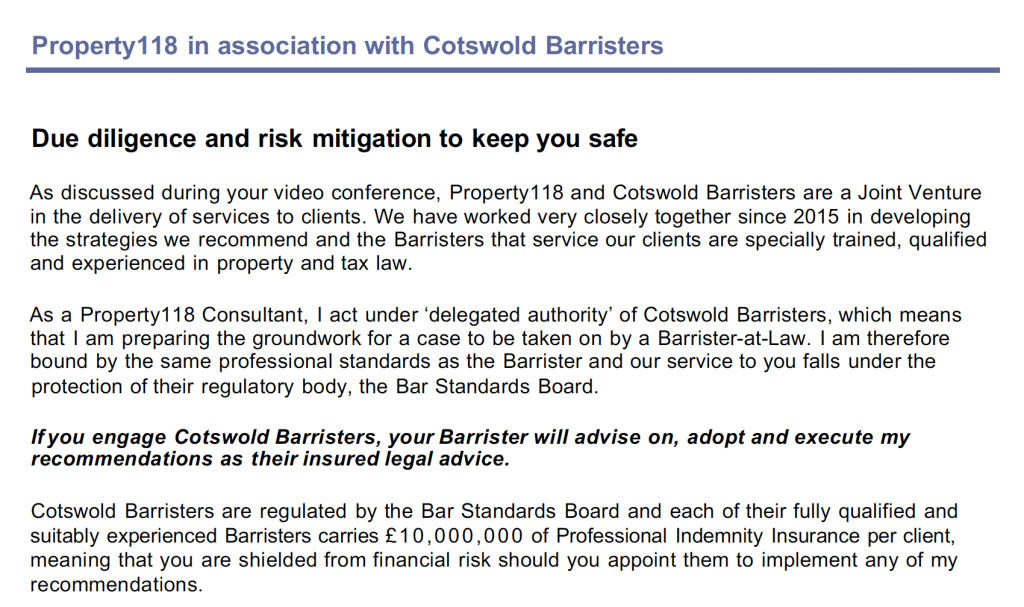
The reference to “delegated authority” is strange. The claim that a non-barrister could be bound by Bar professional standards and be subject to the Bar Standards Board has perplexed all of the barristers we’ve spoken to.
We put this to Mark Smith of Cotswold Barristers. He said:
“Barristers must disclose, to the BSB and clients, any associations they have with people or entities in their provision of legal services. This is a code of conduct requirement. This was complied with at the outset of our relationship with Property 118 (P118). It has recently (Jan-Mar 2023) been re-examined by the BSB as part of a routine audit of Cotswold Barristers (CB) following an update of the BSB’s Transparency Rules. We had correspondence with the BSB about this, and they were and are satisfied our association is compliant. We did review the wording relating to ‘delegated authority’ at that point, as it was ambiguous. P118 has since amended this portion of their materials, so it makes it clear their consultants only work under delegation when the client has engaged with CB. Again, so long as it is made clear to the client, and the barrister is ultimately responsible, sub-contracting of work is permitted under the Code of Conduct.”
We don’t see an ambiguity: we think the claim that Property118 are bound by Bar professional standards, and subject to the BSB, is false. We asked Mr Smith to explain this claim, and he did not respond.
We’re writing to the Bar Standards Board to see if they can cast any light on these issues. We are also asking them to look into the wider question of why Cotswold Barristers are giving legal and tax advice that is obviously wrong.
Professional indemnity insurance
Property118 say that their barristers’ professional indemnity insurance means their clients are “shielded from financial risk”:

That’s not at all how professional indemnity insurance works. If the tax structure turns out to be the disaster we think it is, and the client wants to recover their loss, they have to successfully sue the barrister for negligence. That’s never a straightforward undertaking; not least because the barrister would presumably deny causation on the basis that you would have followed Property118’s advice even if Cotswold Barristers hadn’t been involved. And Property118 aren’t regulated, are unlikely to have any insurance, and probably aren’t good for the money (its owner lives in Malta).
The mortgage problem
Property118 say their structure is “fully compliant for mortgage purposes”:

However this appears to rely significantly on not telling lenders that their security has become the subject of a trust:

We asked UK Finance, the representative body for mortgage lenders, what they thought of the structure. They said:
“If someone wishes to transfer ownership of a buy to let property they should contact their lender to discuss whether this is permitted under the terms of any mortgage on the property. Transferring ownership of a property into a trust without informing your lender and seeking their consent would most likely be a breach of a mortgage’s terms and conditions.”
We believe UK Finance are clearly right on this. But even we didn’t agree, we’d suggest that it’s not a good idea to enter into a structure which your lender believes most likely breaches the terms of your mortgage.
Property118 and Cotswold Barristers seem to be in denial. They tell their clients:
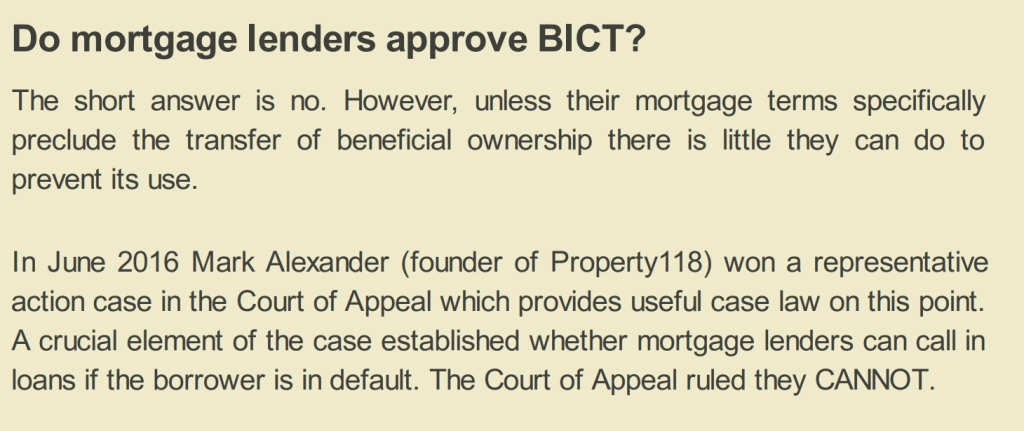
The idea a lender can’t require repayment of a mortgage when it is in default is very strange. The 2016 Court of Appeal case they cite concerned whether a lender could require repayment of a mortgage when there was no default. We don’t understand how Property118 can make this claim when their own founder was the claimant in the case.
The problem with the trust
Property118 do seem aware there could be an issue with declaring a trust that shifts beneficial ownership to a company without telling the mortgage lender. They say:

There’s a similar theme on the Property118 website:

Is this an accurate reflection of most mortgage T&Cs?
One of our team undertook a very fast and incomplete review of major mortgage lender BTL T&Cs, carried out in about one hour.11Caveat: our team only had English expertise; the law is different in Scotland and Northern Ireland and therefore none of the analysis in this section applies to it; however given that Property118’s English lawyers get the English law position wrong, it would be optimistic to assume that they have the Scots and Northern Irish position right
She found specific prohibitions in Investec:
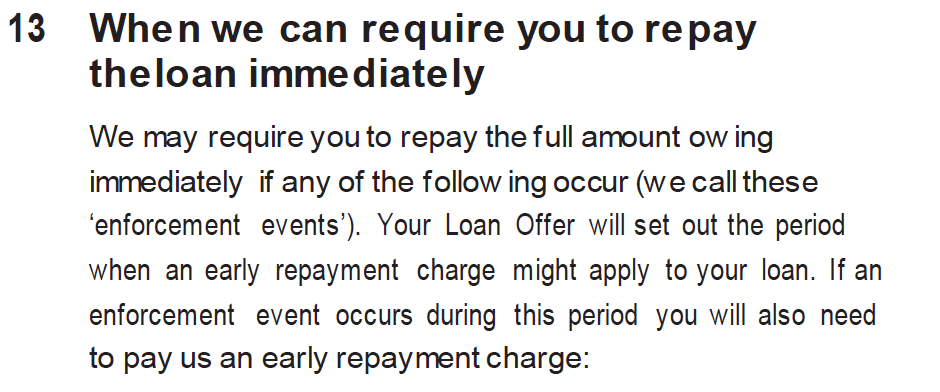

And Clydesdale:


So the specific claim there are only two lenders with prohibitions is false.
But the larger problem is more basic. This is the key claim made by property118 (highlighted in blue):
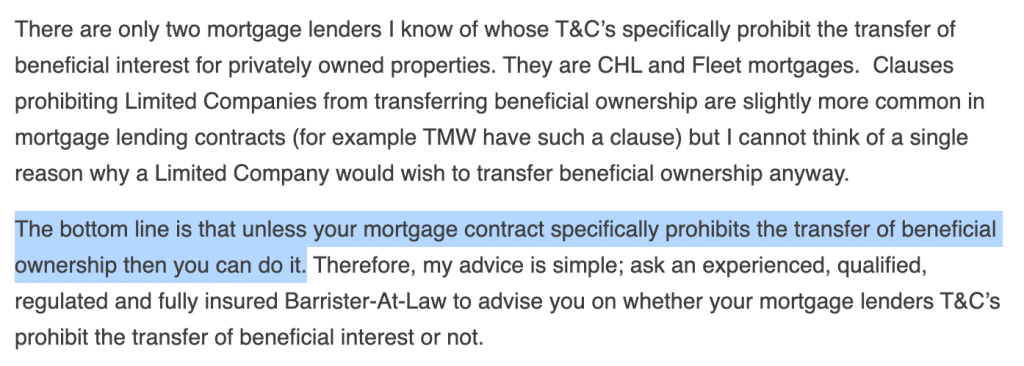
The “Barrister-At-Law” will be Mark Smith of Cotswold Barristers. He takes the same approach: “as a matter of law, unless it says specifically in the terms and conditions [that] you can’t do it, then you can”.
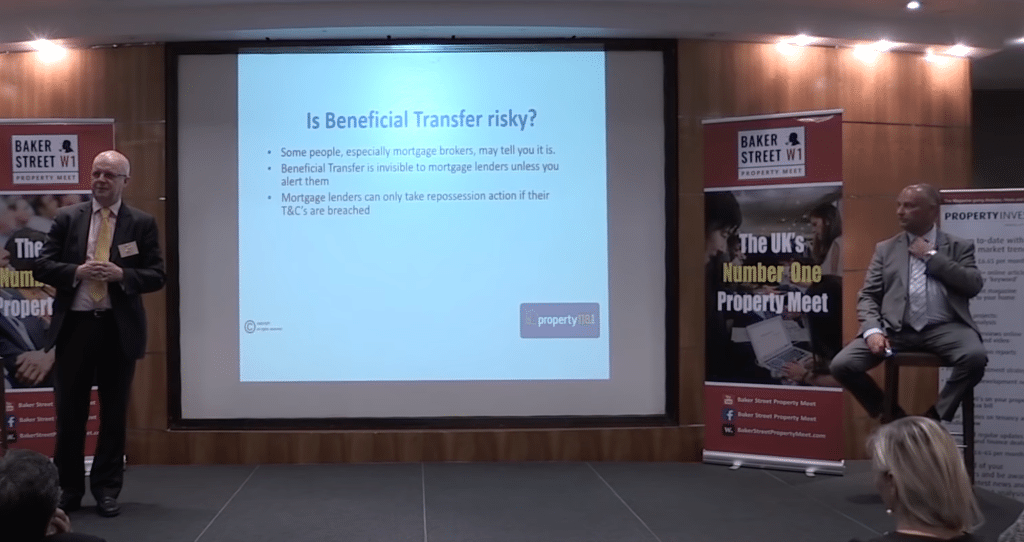
This is not how English law security documentation works. The mortgage terms don’t need to have a specific prohibition on declaring a trust. All that’s required – and this is common – is to simply prohibit the sale or transfer of the property, and define “property” so it includes all interests, meaning the beneficial interests that would be transferred by a trust.
Here’s NatWest:


Or The Mortgage Works (aka Nationwide):


Other lenders have a general transfer of ownership prohibition which is drafted broadly enough to capture trusts and sales of beneficial interest. For example, TSB:

After undertaking this review, we spoke to a series of experienced real estate finance lawyers, who act for lenders and borrowers on everything from small domestic conveyancing transactions to the largest commercial real estate transactions. It was their unanimous view that, one way or another, a trust would be prohibited by most and possibly all mortgage T&Cs.
We put this point to Property118 and Cotswold Barristers, and specifically gave one of these mortgage terms as an example. They declined to explain their position as a legal matter, instead asserting that large conveyancing companies agreed with them, and that no bank had ever raised the point. That, again, does not answer the question. The large conveyancing firms are built to handle straightforward conveyancing at scale, not to answer technical queries on unusual trust arrangements. Mortgage lenders will not raise the point unless they become aware of it. Until now, we don’t believe they were. However, we briefed the mortgage lenders’ representative body, UK Finance, on the structure, and their view is now clear:
“Transferring ownership of a property into a trust without informing your lender and seeking their consent would most likely be a breach of a mortgage’s terms and conditions.”
It is therefore reasonably clear that entering into this arrangement without the consent of the lender likely defaults the mortgage.12The original version of this report also discussed the potential for the trust to invalidate the buildings insurance of freehold property, which would be another mortgage default. Our was undertaken by insurance specialists but has been questioned by others with expertise in insurance law. This report is intended to reflect a consensus view of relevant experts, and therefore (given there is at least some doubt as to the position) we have removed that text. The general point about mortgage defaults (for both freehold and leasehold property) remains, and it is this point that UK Finance are referring to.
Legal and tax analysis – capital gain
X probably has a large latent capital gain in the properties. For example, if X’s acquisition cost of the portfolio was £4m, and X sold it now for current market value of £8m, X would have a £4m capital gain, and pay £1.12m CGT.
But Property118 claim their Substantial Incorporation Structure means that CGT incorporation relief applies.
That would have two very nice outcomes for X. First, there’s no CGT at all to pay on the transfer to the Company. Second, the capital gain is “rolled over” into the shares in the Company, so that any sale of the shares is subject to CGT broadly as if X had held them all along. The latent capital gain of the properties themselves is eliminated – the properties are “rebased” to current market value. So if the Company sold the properties for £8m, there would be zero tax to pay.
However, there is considerable doubt whether incorporation relief will apply.
The legislation requires that “the whole of the assets of the business” move to the Company. And that’s not happening13An additional problem is that the liabilities of the business are not being transferred; rather they are being covered by an indemnity from the Company, and that means the consideration does not just consist of shares (which s162 requires). On the face of it, that prevents incorporation relief applying. There is an HMRC concession that HMRC do not take this point (ESC D32). That is very convenient (and necessary) for the Substantial Incorporation structure. But two important niggles: (1) there is no technical basis for ESC D32 and therefore, following the Wilkinson case, it’s unclear how HMRC can continue to apply it, and (2) a taxpayer engaged in tax avoidance cannot rely upon any HMRC concession or published practice (a point HMRC go out of their way to stress in their guidance).

The problem here is that legal title in the properties is being left behind. This is not some minor legal formality; legal title over real estate has reality and value to it. You can’t borrow without legal title. You can’t refinance. You can’t sell. In many “bare trust” cases this is a distinction without a difference, because the beneficiary can call for legal title at any time. Here they cannot, because the consent of the mortgage lender would be required. The Company’s inability to acquire legal title is a real constraint on its business – and that demonstrates that it did not in fact acquire the “whole assets of the business”.14Similar issues may arise with other assets of the business which are staying put as a legal matter but (presumably) purportedly being assigned in equity: e.g. buildings insurance policies, tenancy agreements, letting agent agreements, the right to recovery of . The legal title that is being left behind is an asset, and not a valueless one. A business that only has equitable title to the core elements of its business is not the same as a normal business. A landlord is also subject to a large number of regulatory requirements around deposit protection, fire safety, etc – and these obligations will remain with the landlord as legal owner.
Another way of putting the same point is that there is no transfer of a “business as a going concern”, just an economic transfer under a trust. The “business” is operated by the person with the legal title, as it’s that person who has all the dealings with the tenant, bank, service providers, etc. This “business” isn’t moving at all.
So our view is that incorporation relief likely does not apply.15Cotswold Barristers’ response was that there was a deemed CGT disposal of legal and beneficial title day one, and so the whole assets of the company were deemed to be transferred. We don’t think that’s defensible. Section 28 is a rule which sets the time of a disposal for CGT purposes. It is not some wider deeming rule which deems an asset to have been actually transferred on a different date. Incorporation relief refers to “transfer” (the legal/commercial concept) and not “disposal” (the CGT concept). This is therefore a misreading of section 28. The courts have always held that deeming rules should be restricted to their statutory purpose.) UPDATE: Property118’s own KC ended up agreeing with us on this point
(In many cases there will also be doubt as to whether X’s activity as a landlord is enough to constitute a “business”.16See the Elizabeth Ramsay case, and HMRC commentary here.)
UPDATE: Mark Smith finally published a specific response to this point on 20 October 2023. He makes the obvious point that capital gains tax normally looks to beneficial ownership, not legal ownership, when considering whether a disposal has been made. But section 162 is not looking at whether a CGT disposal has been made – it uses the terms “whole assets of the business” and “transfers… a business as a going concern”. We read these as factual tests. And, factually, significant elements of the business remain with the landlord. Only the landlord can deal with the lender, the tenants, letting agents, and other contractual parties. The business of the company is very different – it’s just a passive investor. We made this point above; Mr Smith does not attempt to respond to it.
Mr Smith again makes the claim that HMRC have accepted the position. This would only be relevant if the true nature of the structure was disclosed to HMRC, and the s162 point above specifically drawn to HMRC’s attention. We doubt that is the case, but even if it was, it would only provide comfort to the taxpayers specifically covered by that correspondence. HMRC would not be bound for other Property118 clients.
There is therefore, as ever, no substitute for properly considering the legal position.
Legal analysis – SDLT
On the face of it, SDLT17or the equivalent devolved taxes if one or more of the properties is in Scotland or Wales is due on the transfer of the properties by X to the Company, on the full market value at a marginal rate of up to 15%.18That’s including the 3% surcharge for purchases of dwellings by companies. In some cases we would also need to add the 2% increased rate for non-resident transactions. That’s potentially a huge up-front cost. There’s a relief for partnerships incorporating, but not for individuals incorporating.
In many cases, SDLT would make the Substantial Incorporation Structure uneconomic, with a large up-front tax cost. Here’s the Property118/Cotswold Barristers solution:
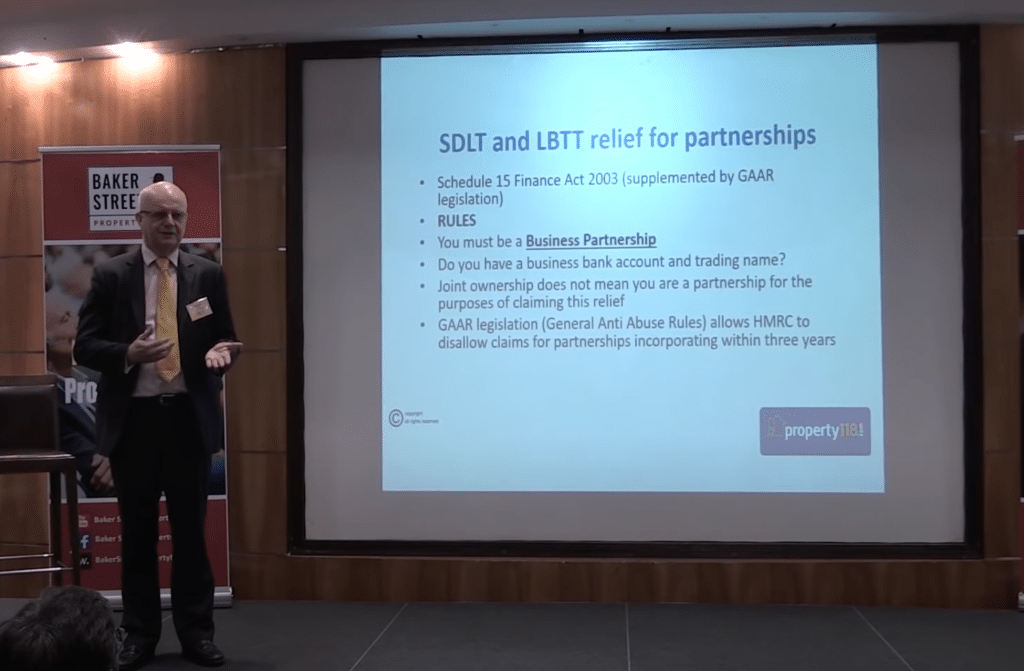
It’s to claim that, where a husband and wife run a property rental business together, in fact they’ve always been a partnership, and partnership relief is available. They do this, even in cases where there was no partnership agreement, no partnership tax returns, and no extraneous evidence of any kind that a partnership existed. Technically that does not make it impossible that there was a partnership – it’s a question of fact. But the recent SC Properties case shows just how difficult is to establish a partnership in such circumstances – and the burden of proof is on the taxpayer. It is usual for a married couple to manage their financial affairs together, but that does not normally mean there is a partnership in the legal sense. Relations between spouses are very different from the business relations of partners in a partnership.19Section 2(1) of the Partnership Act 1890 is clear that joint ownership is not enough, and sharing profits is not enough. It’s the relationship between the parties that is key. This is something that Smith and Property118 appear to overlook.
If SDLT were payable (because the properties are not partnership property), then interest and penalties for late filing would be due. Although multiple dwellings relief would usually be available to reduce the SDLT charge, this relief is unavailable if it is not claimed in a return or an amendment to a return. And an SDLT return cannot be amended more than one year after the filing date for the transfer. If any of the properties were occupied by X or his relatives (or not held for a qualifying business purpose) the SDLT rate on that property would be 15%.20Plus the 2% increased rates for non-resident transactions, if applicable).
In our view, it will only be in rare cases that this strategy succeeds, and SDLT relief applies – and HMRC guidance suggests that HMRC are likely to contest the point.21There may be other potential attacks on the “retrospective partnership” strategy using anti-avoidance legislation and principles
Finally, although no annual tax on enveloped dwelling (ATED) would be payable to the extent that the properties are let out to third parties, ATED relief must be claimed. It is unclear to us if Property 118 advise their clients to file ATED returns (our sources have not seen such advice). Failure to file triggers late-filing penalties of up to £1,600 per return per year. For companies that used these arrangements over five years ago, it might come as quite a shock that they are liable to £8,000 of penalties even though no ATED is due.
Legal and tax analysis – taxation of the interest payments
Property118 and Cotswold Barristers say:
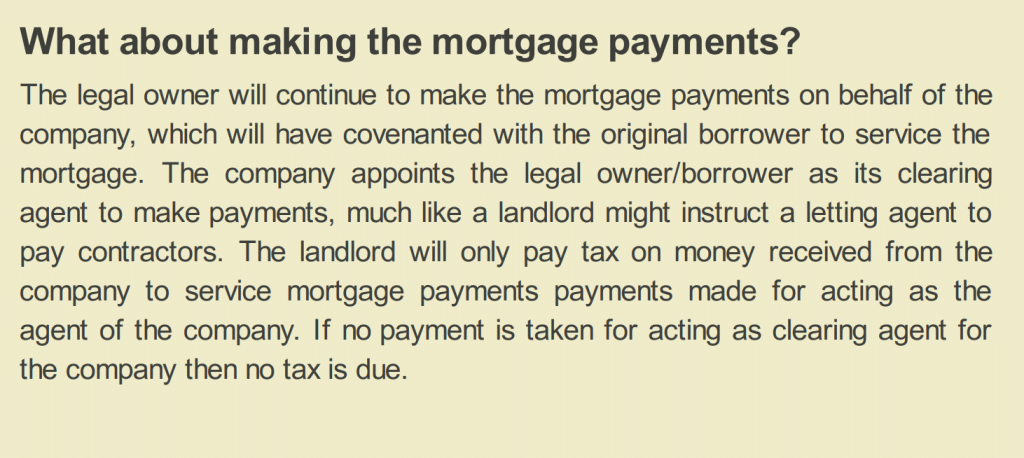
They make a slightly different claim in the video below: that the “legal owner continues to make mortgage payments (as nominee of the beneficiary) and claims the payments back from the beneficiary as out of pocket expenses, which are tax free.”
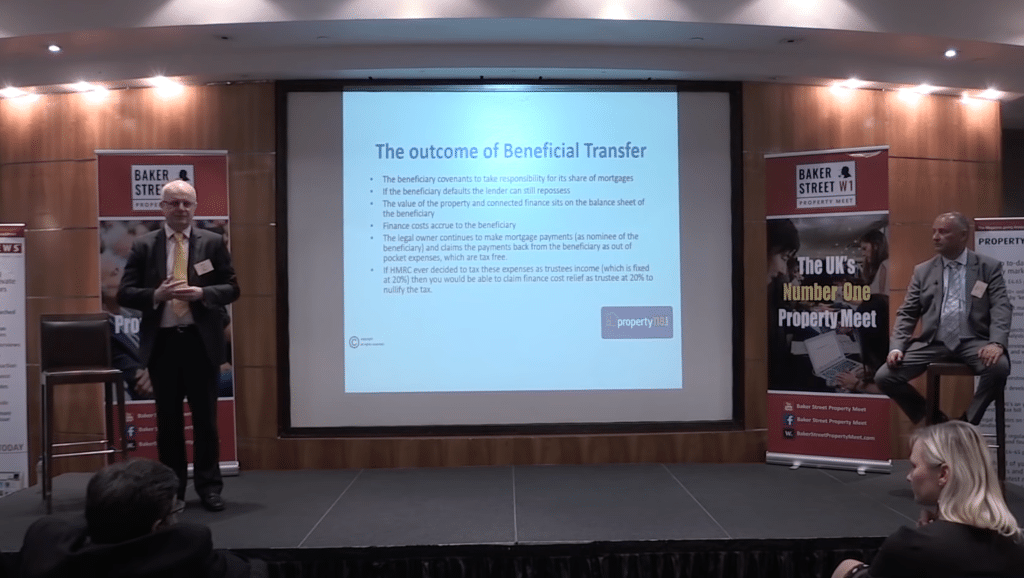
But that is not right at all. X, the legal owner, is not the “agent” or “nominee” of the Company under the loan – X remains the borrower under the loan in their own right. You cannot declare a trust over obligations. What is actually happening is that the Company is making indemnity payments to X, which pays the mortgage lender (and this is the case as a legal matter even if, as I suspect, there are never any cash payments from the Company to X). X therefore remains taxable.
When we look at the actual legal and tax analysis that follows from this, the entire structure falls apart.
Deductibility of interest payments for the Company
Mark Smith says in this video that the payment is “deductible in accordance with normal corporation tax principles”. That’s not correct.
The corporation tax treatment of debt is governed by the loan relationship rules in Part 5 of Corporation Tax Act 2009. For these rules to apply, the Company must have a “loan relationship”, for which it has to be “standing in the position of debtor under a money debt” which must “arise from a transaction for the lending of money“. But the Company doesn’t have a money debt and never borrowed any money – it’s just making indemnity payments. There is only one loan, and that was from the mortgage lender to X – and it’s still there.22The obvious way to test the loan relationship point is to ask whether the Company can be sued by the mortgage lender; the obvious answer is that it cannot. Note that whether there is a “loan relationship” or not is a legal test, not an accounting test – even if the accounts here show the Company as party to a loan, it won’t have a loan relationship
So the Company doesn’t have a loan relationship and will not achieve a deduction under the loan relationship rules.23One correspondent raised a plausible argument to the contrary: condition C in s330A CTA 2009 applies on the basis that there was a “transaction which [had] the effect of transferring to the company all or part of the risk or reward” of the mortgage (this is not an argument Property118 has made; there is no evidence they are aware of any of the provisions of the loan relationships rules). We are, however, doubtful that an indemnity has that effect – it is cashflows which are (economically) transferred, not risk/reward. An indemnity is economically and legally distinct from defeasance. Financing cost indemnities are often seen on commercial transactions, and the idea s330A applies to such arrangements would be novel. It is, furthermore, unclear if X would benefit even if s330A applied. It seems likely that the main purposes of the arrangement are to enable the Company to obtain a tax advantage; on that bass, s455C would apply to deny the deduction
It might achieve a deduction under the general rules for a company carrying on a UK property business. That requires the indemnity payments to be recognised in the accounts and for the indemnity payments to be regarded from a tax perspective as income of the property business and not as further consideration for the capital transaction of the original acquisition of the beneficial interest. We don’t think either is a straightforward point. 24A better argument Property118 could make is that the company doesn’t need a deduction for the indemnity payment, because under the trust it’s only entitled to the net rent (after mortgage payments are made). That, however, is contrary to the nature of a bare trust – see e.g. the HMRC guidance here
So it cannot be assumed that the Company will achieve a deduction for its indemnity payments. If it doesn’t, we are in a worst-case scenario for X which looks like this:

More than doubling X’s original £2,400 tax bill. Not a good result.
Even if the Company does achieve a deduction, the result is still worse than the original £2,400 of tax:

We put this point to Cotswold Barristers. They asserted that the payment was deductible but were unable to explain how or why.
Taxability of indemnity payments
We can immediately dismiss the explanation in the video – that X is receiving tax-free out-of-pocket expenses. That would be the case if the loan had been entered into by X as trustee for the Company. But it wasn’t – the loan was simply entered into by X and X alone, and the trust can’t change that). The payments X makes to the lender are not trust expenses – they’re X’s personal expenses. And no agreement X signs with the Company can change this – you can’t transfer an obligation, or create a trust over an obligation.
That’s a big problem. X no longer has a property business (because he is a mere trustee). So X has zero basis for claiming a deduction on the interest he pays the bank. But he is now receiving a stream of indemnity payments under a legal obligation. They will be taxable (perhaps as “annual payments“, perhaps as “miscellaneous income“). That creates a large tax charge for X – it’s the worst-case outcome we show above.
We see only one potential counter-argument: to say that the indemnity payments actually form part of the consideration for the original sale,25Property118’s actual implementation is unclear. We have seen some documentation which states that the indemnity payments are consideration (which we expect is the intended outcome). However we have also seen a legal advice note from Mark Smith in which he says that the consideration is the issue of shares equal to the market value of the property (i.e. with no deduction for the debt) – we do not know if this was a on-off mistake, or reflects a general confusion as to the legal character of the transaction and so are capital and not revenue items. If so, and the original sale was exempt from CGT, then there’s no additional tax to pay; but the consequence of this argument is that the Company absolutely won’t get a tax deduction for its indemnity payments (because they must be capital payments too). That results in this, which we think is the best-case outcome of the Substantial Incorporation Structure:

Note that the best-case outcome here (which we’d expect HMRC to resist) is still worse than the original £2,400 tax bill. You’d have been better off doing nothing.
Or, if the original sale was subject to CGT then probably26“Probably” because we think the uncertainty as to how long the mortgage will remain in place probably makes the stream of indemnity payments “unascertainable future consideration”, charged to CGT when each payment is made. But there’s a risk that, at least in some cases, it’s not unascertainable (for example, if the mortgage doesn’t have long to run). In that case, the stream of indemnity payments would have to be calculated and added to the original disposal consideration, with no discount applied – potentially a really bad result each indemnity payment is subject to CGT at 28%, resulting in this bad-but-not-quite-worst-case outcome:

We put this point to Cotswold Barristers. They were unable to explain why the indemnity receipts weren’t taxable, but said that HMRC had never raised the point. We expect that is because the issue has never been properly disclosed to HMRC.
Back in 2019, Mark Smith gave a mystifying explanation in this video:
“Finance costs accrue to the beneficiary, the company pays the expense of running the mortgage and it’s deductible on normal corporation tax principles. You don’t even have to change your direct debit or standing order payments, because you are allowed to receive the money for the mortgage repayments from the company as their agent without it being taxable in your hands, as long as at some point it flows through the company books, the company bank account, it’s only taxable by the company. You only receive the money as their agent, you make the payment as the company’s agent. And there’s a fallback position. Even if HMRC tried to tax you on it, you only pay tax at trustee rates, which basically washes out any impact of having to pay tax on it because you get the tax credit back again at 20% basic rate.”
This is gobbledygook. The individual is not the company’s agent when making mortgage payments – the individual entered into the mortgage as principal. The mortgage doesn’t form part of the trust – you can’t declare a trust over an obligation. The trust rate (and associated credit rules) apply to settlements, not bare/simple trusts – they cannot apply to this structure (and if the arrangement was a settlement there would be an array of other consequences, mostly adverse).
Legal and tax analysis – inheritance tax
Cotswold Barristers send clients materials presenting them with extraordinarily large (and unrealistic) inheritance tax calculations. We’ve seen one projecting that a client’s portfolio of under £10m would be worth £200m in ten years’ time, so with a potential inheritance tax bill of £80m. This is, at best, sharp practice and, at worst, misselling.
They say that the advantage of their Smart Company solution is that:
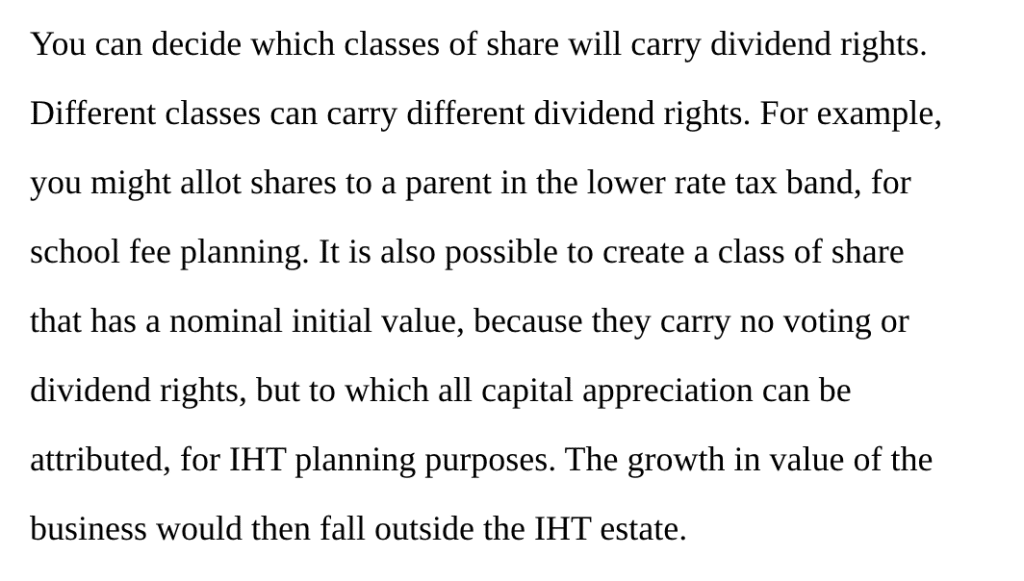
So you say the property portfolio is currently worth £10m, and issue shares which are worth the value of the portfolio minus £10m. Those shares are therefore worth £0 today (you claim), and you can give the shares to your children with no inheritance tax or capital gains consequences. But if the portfolio did become worth £200m in ten years’ time, the shares would be worth £190m. More magic.
The flaw in this is that the shares plainly aren’t actually worth £0 when created. It’s easy to test this: would they sell them to Tax Policy Associates for £1,000? That’s a fantastic deal for them, if the shares are really worth nothing. But obviously, nobody would take up that offer – because there’s a large expected capital appreciation embedded in the value of the shares. And that’s the tax conclusion too: the shares have a large current value equal to the discounted expected capital appreciation. We’re aware of two cases where shares of this kind have been litigated, and the contention that the shares were valueless failed (with, in one case, the Tribunal actually giving the shares a seven-figure value).
That means this structure probably has immediate inheritance tax and capital gains tax consequences (possibly also consequences under the “employment related securities” rules).
A further twist:
Cotswold Barristers and Property118 often advise putting these shares in a discretionary trust. We’ve seen them recommend “Creation of a Discretionary Trust controlled by you via a Letter of Wishes to shelter all future capital growth in the portfolio from Inheritance Tax”.
A “discretionary trust controlled by you” isn’t a trust – it’s a sham.
And another twist:
Part of the idea seems to be that shares are being created for children, so they can receive dividends and pay less tax than the parents (because of their allowances and lower tax rates). But there are specific rules that stop this.
DOTAS
Given that the main (and perhaps sole) purpose of Property118’s scheme is tax avoidance, it seems likely that their structures should be registered with HMRC under DOTAS – the rules requiring disclosure of tax avoidance schemes.
Cotswold Barristers told us that HMRC considered this point in 2021 and did not take it forward.
We would query if Cotswold Barristers made HMRC aware of the size of their fees. A “premium fee” (being a fee which is more than the time value of the work carried out) is one of the hallmarks which can trigger DOTAS.
Another DOTAS “hallmark” is where it is reasonable to expect a promoter would wish an element of the arrangements to be kept confidential from any other promoter. Property118 sent us correspondence refusing to explain elements of their structure, because it was “valuable intellectual property”. That may amount to an (accidental) admission that the confidentiality hallmark applies.
The “standardised tax product” hallmark may apply as well. Property118 boast about their “suite of documentation”.
Failure to comply with DOTAS can result in fines of up to £1m.
More strange Property118 advice
The Property118 website has other examples of tax planning that raises alarm bells, because it has no reasonable prospect of success. We’ll mention just two examples:
Capital gains value shifting
The capital gains tax avoidance below ignores the existence of a specific anti-avoidance rule:
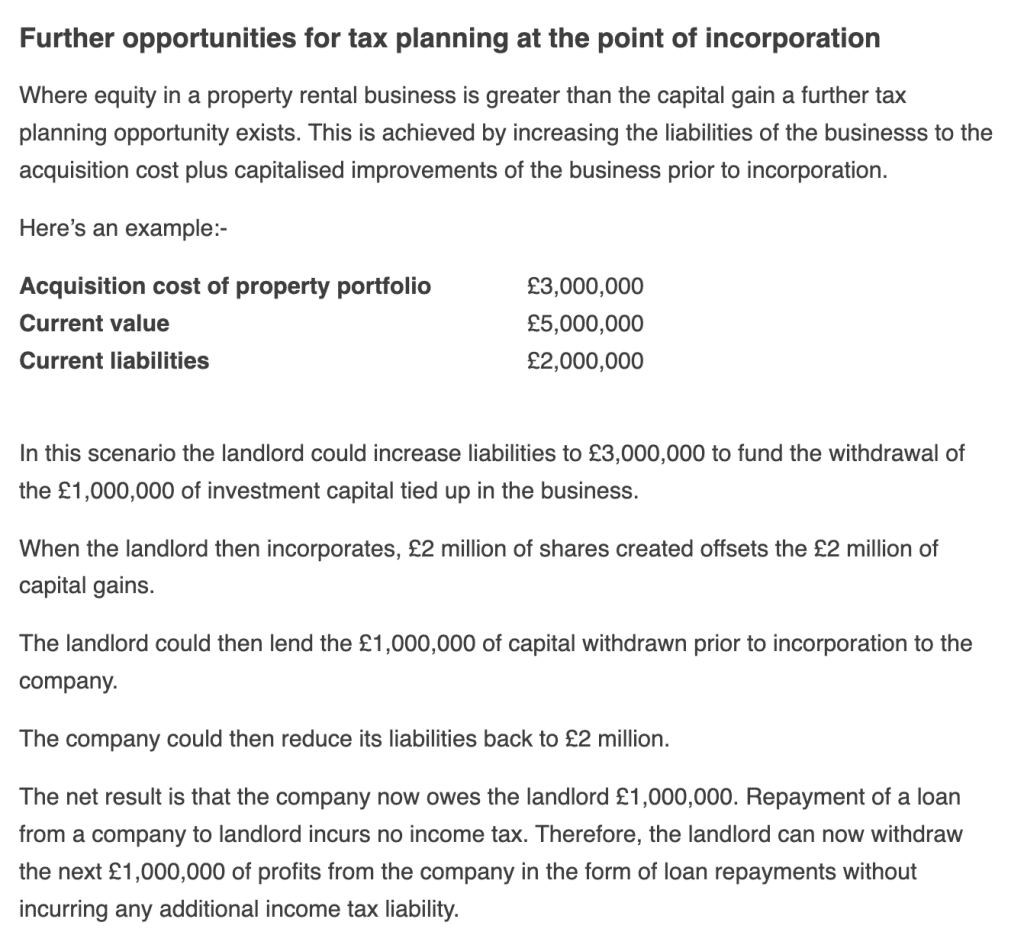
An entirely artificial step is used to reduce the capital value of the shares, and then immediately re-inflate it. There are very longstanding rules to counter such “value-shifting” transactions (as well as a plethora of other statutory rules, plus common law anti-avoidance principles).
The structure as presented in our view has no reasonable prospect of success.
UPDATE 22 September: after this report was published we found more details of this scheme, and it turns out to be rather different from the description above, and much worse. We’ve written a short analysis of this here.
SDLT avoidance
This page suggests that SDLT can be reduced when acquiring a “house in multiple occupation” (HMO), i.e. where many people have separate bedrooms but there is one front door and usually one living room. The idea is that “multiple dwellings relief” applies. (There is similar advice in this video)
That is, however, wrong – MDR applies only where there are separate dwellings, and a bedroom is not a dwelling. That was fairly obvious when the page was written in 2020. It is more obvious now, as an Upper Tier Tribunal has ruled on the point.27There is also a technical problem with the claim on this page, which Sean Randall (an experienced SDLT adviser and Chair of the Stamp Taxes Practitioners Group) explained here – with an unconvincing response from Property118.
What if you’ve entered into a Property118 scheme?
We would strongly suggest you seek advice from an independent tax professional, in particular a tax lawyer or an accountant who is a member of a regulated tax body (e.g. ACCA, ATT, CIOT, ICAEW, ICAS or STEP). Given the potential for a mortgage default, we would also suggest you urgently seek advice from a solicitor experienced with trusts and mortgages/real estate finance (e.g. a member of STEP).
We would advise against approaching Property118 given the obvious potential for a conflict of interest.
Property118 and Cotswold Barristers’ response to this article
It is common practice to give the subject of a report or investigation 24 hours to respond. The response we received from Property118 was unusual in several respects. We set it out below in full.
The initial response was a request from the CEO of Cotswold Barristers to join a recorded Zoom call: “Why won’t you come on video and ask your questions? The public deserve to make their own assessment”.
Property118 then failed to respond to any of the technical questions we asked.
Cotswold Barristers responded, but leant very heavily on the claim that their approach has been accepted by HMRC and other accounting firms. We are sceptical that full disclosure was ever made to HMRC; if you approach HMRC for a clearance but don’t mention all the facts, or all the technical issues relevant to the clearance, then any clearance you get cannot be relied upon.28The leading case here is R v Inland Revenue Commissioners, ex p. MFK Underwriting Agencies Ltd, which held that a taxpayer must “put all his cards face upwards on the table”. And HMRC clearances can never be relied upon where there is tax avoidance.
The final response was a vague legal threat: “Your continued blackmail is noted and our response to any damages caused to our businesses by your future actions will be dealt with accordingly.”
In the interests of transparency, we set out the correspondence in full below. The thumbnails should expand when you click on them. Alternatively, the correspondence can be downloaded as a PDF here.
Our original query:
The initial response from Property118, including HMRC correspondence29Which had a peculiar feature; however given that it could identify the client, we are not publishing it, customer testimonials, a complaint about the timescale and a vague legal threat:
The clerk/CEO of Cotswolds Chambers responded by suggesting a recorded Zoom call, because that’s “what the public would expect in 2023”:
We then received a letter from Mark Smith. This responds to our queries about the unusual relationship between Property118 and Cotswolds Barristers by referring to a recent BSB audit (discussed further above). Mr Smith responds to our CGT incorporation relief criticism by misunderstanding the s28 deeming rule; otherwise there is little in the way of technical content. For the most part, the response is “no one else has complained“:
We asked for a specific response to the technical points we had made:
Smith asks for two weeks to respond to our email. When we say that’s not realistic, and these are points they should already know the answers to, Mark Alexander sends a somewhat intemperate response:
Then a more detailed response, with a long list of people he works with (names redacted out of fairness to the individuals):
And finally a vague legal threat and accusation of blackmail::
Many thanks to G and S for bringing this to our attention. Thanks to J, T, F and BM for their help with the mortgage aspects, as well as UK Finance. Thanks to E for trust law expertise, T for insurance law input, H, S and O for the barrister conduct issues, A and Sean Randall for the specialist SDLT input, and C for advice on the direct tax/indemnity point. Thanks to Pete Miller, who wrote on the incorporation relief point three months ago, and independently reached the same conclusion as us. Pete and Sean also kindly reviewed a draft of this report, and provided invaluable feedback. J kindly provided some technical corrections after the initial version of this report was published. And thanks to Ray McCann (former senior HMRC inspector and past President of the Chartered Institute of Taxation).
We rely upon the goodwill and expertise of a large number of tax professionals, only some of whom we can name. As ever, Tax Policy Associates takes sole responsibility for the contents of this report.
Landlord image by rawpixel.com on Freepik. House image by new7ducks on Freepik. Bank image by Freepik – Flaticon
-
1The rate is 19% for profits under £50,000, with a “catch-up rate” of 26.5% on profits up to £250,000, so that the overall effective rate smoothly transitions into the full rate of 25%
-
2Obviously you will want to get the money out at some point, but being able to defer and roll up low-taxed income is valuable in itself
-
3Because a landlord can walk away from a company in a way that they cannot walk away from a personal mortgage
-
4We have established this is their structure from published information on the Property118 and Cotswold Barristers websites (e.g. this brochure, and here, here, here, and here) as well as copies of their advice we received from our sources.
-
5This is perhaps the most likely of a number of possibilities, all discussed further below
-
6In the interests of concision, we don’t go into one somewhat difficult point: the effect of a sale when that sale is prohibited by another contract (the mortgage). The Don King v Warren case is general authority for the proposition that such a sale will still be effective in equity, and we expect that will be the case here. However the issues are not straightforward; and if we’re wrong, and the sale is not effective in equity, then essentially nothing has happened from a tax perspective, and it’s as if the transaction never happened. No tax benefit, but also none of the unfortunate results we go into below.
-
7the landlord may be able to recover from the company under the indemnity, but if the companies’ assets are insufficient, the landlord will remain on the hook. There are, therefore, no liability advantages from the substantial incorporation structure, compared to, if the landlord just held the properties personally.
-
8In an earlier (and unrelated) LinkedIn discussion, Mark Smith, head of Cotswold Barristers, hadn’t heard of the term “tax set” – i.e. he was unaware that there were specialist tax barristers’ chambers.
-
9Not to be confused with Mark Smith, the respected extradition barrister.
-
10This is from a document they sent to a client a few months ago
-
11Caveat: our team only had English expertise; the law is different in Scotland and Northern Ireland and therefore none of the analysis in this section applies to it; however given that Property118’s English lawyers get the English law position wrong, it would be optimistic to assume that they have the Scots and Northern Irish position right
-
12The original version of this report also discussed the potential for the trust to invalidate the buildings insurance of freehold property, which would be another mortgage default. Our was undertaken by insurance specialists but has been questioned by others with expertise in insurance law. This report is intended to reflect a consensus view of relevant experts, and therefore (given there is at least some doubt as to the position) we have removed that text. The general point about mortgage defaults (for both freehold and leasehold property) remains, and it is this point that UK Finance are referring to.
-
13An additional problem is that the liabilities of the business are not being transferred; rather they are being covered by an indemnity from the Company, and that means the consideration does not just consist of shares (which s162 requires). On the face of it, that prevents incorporation relief applying. There is an HMRC concession that HMRC do not take this point (ESC D32). That is very convenient (and necessary) for the Substantial Incorporation structure. But two important niggles: (1) there is no technical basis for ESC D32 and therefore, following the Wilkinson case, it’s unclear how HMRC can continue to apply it, and (2) a taxpayer engaged in tax avoidance cannot rely upon any HMRC concession or published practice (a point HMRC go out of their way to stress in their guidance).
-
14Similar issues may arise with other assets of the business which are staying put as a legal matter but (presumably) purportedly being assigned in equity: e.g. buildings insurance policies, tenancy agreements, letting agent agreements, the right to recovery of . The legal title that is being left behind is an asset, and not a valueless one. A business that only has equitable title to the core elements of its business is not the same as a normal business. A landlord is also subject to a large number of regulatory requirements around deposit protection, fire safety, etc – and these obligations will remain with the landlord as legal owner.
-
15Cotswold Barristers’ response was that there was a deemed CGT disposal of legal and beneficial title day one, and so the whole assets of the company were deemed to be transferred. We don’t think that’s defensible. Section 28 is a rule which sets the time of a disposal for CGT purposes. It is not some wider deeming rule which deems an asset to have been actually transferred on a different date. Incorporation relief refers to “transfer” (the legal/commercial concept) and not “disposal” (the CGT concept). This is therefore a misreading of section 28. The courts have always held that deeming rules should be restricted to their statutory purpose.) UPDATE: Property118’s own KC ended up agreeing with us on this point
-
16See the Elizabeth Ramsay case, and HMRC commentary here.
-
17or the equivalent devolved taxes if one or more of the properties is in Scotland or Wales
-
18That’s including the 3% surcharge for purchases of dwellings by companies. In some cases we would also need to add the 2% increased rate for non-resident transactions.
-
19Section 2(1) of the Partnership Act 1890 is clear that joint ownership is not enough, and sharing profits is not enough. It’s the relationship between the parties that is key. This is something that Smith and Property118 appear to overlook.
-
20Plus the 2% increased rates for non-resident transactions, if applicable).
-
21There may be other potential attacks on the “retrospective partnership” strategy using anti-avoidance legislation and principles
-
22The obvious way to test the loan relationship point is to ask whether the Company can be sued by the mortgage lender; the obvious answer is that it cannot. Note that whether there is a “loan relationship” or not is a legal test, not an accounting test – even if the accounts here show the Company as party to a loan, it won’t have a loan relationship
-
23One correspondent raised a plausible argument to the contrary: condition C in s330A CTA 2009 applies on the basis that there was a “transaction which [had] the effect of transferring to the company all or part of the risk or reward” of the mortgage (this is not an argument Property118 has made; there is no evidence they are aware of any of the provisions of the loan relationships rules). We are, however, doubtful that an indemnity has that effect – it is cashflows which are (economically) transferred, not risk/reward. An indemnity is economically and legally distinct from defeasance. Financing cost indemnities are often seen on commercial transactions, and the idea s330A applies to such arrangements would be novel. It is, furthermore, unclear if X would benefit even if s330A applied. It seems likely that the main purposes of the arrangement are to enable the Company to obtain a tax advantage; on that bass, s455C would apply to deny the deduction
-
24A better argument Property118 could make is that the company doesn’t need a deduction for the indemnity payment, because under the trust it’s only entitled to the net rent (after mortgage payments are made). That, however, is contrary to the nature of a bare trust – see e.g. the HMRC guidance here
-
25Property118’s actual implementation is unclear. We have seen some documentation which states that the indemnity payments are consideration (which we expect is the intended outcome). However we have also seen a legal advice note from Mark Smith in which he says that the consideration is the issue of shares equal to the market value of the property (i.e. with no deduction for the debt) – we do not know if this was a on-off mistake, or reflects a general confusion as to the legal character of the transaction
-
26“Probably” because we think the uncertainty as to how long the mortgage will remain in place probably makes the stream of indemnity payments “unascertainable future consideration”, charged to CGT when each payment is made. But there’s a risk that, at least in some cases, it’s not unascertainable (for example, if the mortgage doesn’t have long to run). In that case, the stream of indemnity payments would have to be calculated and added to the original disposal consideration, with no discount applied – potentially a really bad result
-
27There is also a technical problem with the claim on this page, which Sean Randall (an experienced SDLT adviser and Chair of the Stamp Taxes Practitioners Group) explained here – with an unconvincing response from Property118.
-
28The leading case here is R v Inland Revenue Commissioners, ex p. MFK Underwriting Agencies Ltd, which held that a taxpayer must “put all his cards face upwards on the table”.
-
29Which had a peculiar feature; however given that it could identify the client, we are not publishing it


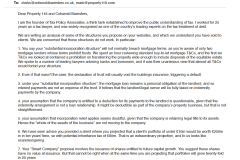
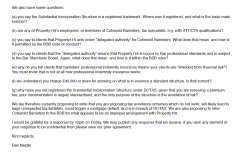


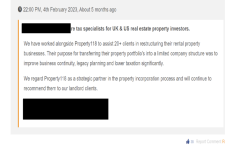
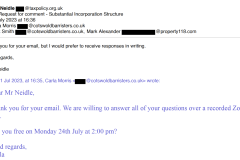
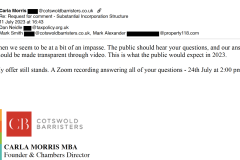
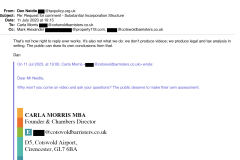


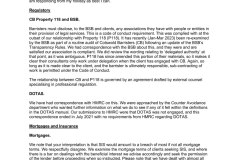
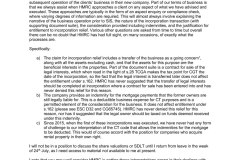
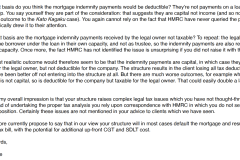
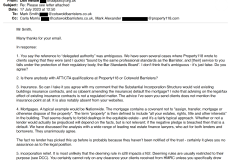

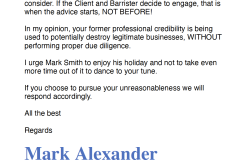

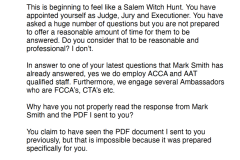
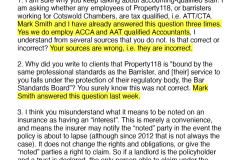
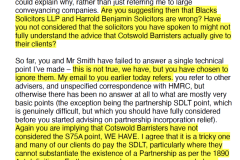
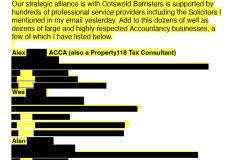
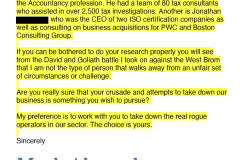
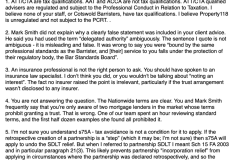
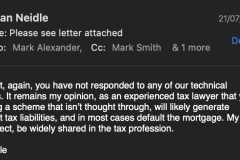

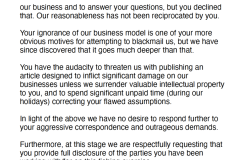
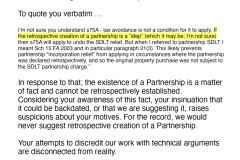
78 responses to “Property118: a tax avoidance scheme for buy-to-let landlords that defaults their mortgage and increases their tax bill”
Interesting and detailed work Dan. However I think your analysis of the mortgage issue is weak. What UK Finance thinks is irrelevant. Back to first principles: what is the proper construction of the contract? parse the relevant provisions, read the case law. Then if it’s not clear- or depending on your risk appetite- contact your lender. A key issue is how a declaration of trust works to give rise to an equitable interest. A long established approach to this is based on the “encumbrance” principle ie that a declaration of trust creates a new right. There is ample authority for the notion that equitable rights do not co-
exist with legal rights. Quoting one expert here: “The creation of a trust does not separate two existing rights. Instead, the creation of a trust creates new equitable rights.” (There are competing conceptions which are closer to a “transfer” concept but scholars say this is flawed). As such, we can distinguish between clauses that refer to transfer or disposition alone vs those that also or instead refer to the grant or creation of new rights. On this approach, from the examples you mention, the Natwest, Mortgage Works and TSB wordings arguably do not prevent the creation of an equitable interest via a declaration of trust. There is the added issue of the absence of registration of any such created interest which adds a further nuance to the construction of such provisions (what does “interest” really mean?).
This is documented as a sale with a deed of trust governing the arrangements created. We spoke to a large number of real estate finance lawyers for the original piece and stand by it. However things have moved on since then, as we’ve now seen several recent copies of the trust deed. It is *weird*. More soon, but the actual analysis is more uncertain and more complicated than we first suggested (but no more favourable for the landlords)
If you drop me a line from a LinkedIn or work email address I’ll gladly share more with you. Or you can see when we publish in a few days.
Could I raise a further point about SDLT?
The nil SDLT result for which P118 argue depends on there being a bona fide partnership, which, as you have pointed out, may be quite hard to demonstrate. Now I am aware, because I have heard them say so in presentations, that if the landlord does not currently operate through a partnership then he/she can set one up (usually with spouse), wait for 3 years and then incorporate. They also say that the 3 year wait is to get around anti-avoidance provisions. Indeed, this is mentioned in the P118 slide that you show in your discussion of SDLT. The last comment on the slide is “GAAR legislation allows HMRC to disallow claims for partnerships incorporating within 3 years”. Putting aside the fact that para 18 sch 15 is not a claim to a relief, it is a mechanism for arriving at the chargeable consideration, I have no ides where this comes from. Where is the 3 year time period in the GAAR rules to which they refer? Or have I missed something? When I first heard them refer to the 3 year waiting period to incorporate I thought they might be thinking about para 17A of sch 15. Not sure how para 17A would apply to an incorporation as such but if, of course, they bolt on their “amazing opportunity” bridge loan scheme then there is a withdrawal of capital and para 17A would be in point. I was giving them some credit for at least spotting one anti-avoidance provision to skirt around. Not so, it seems as they were (bafflingly) thinking about the GAAR, according to the slide.. Moving on, though – what about s75A? They are quite clearly telling people that they can drop their properties into a partnership, wait 3 years and then everything is hunky dory. There is no doubt that this plan is established at the outset and the partnership is just an intermediate step to incorporation in order to avoid an SDLT charge. Indeed, one poster on the P118 website said “having just completed my 3 year transition to incorporation”, which does not leave much room for doubt. I would imagine that client advice and promotional material from P118/CB would make it pretty clear that the partnership is just a transitional step. If HMRC were to look hard enough I doubt that they would have much of a problem in establishing that the contribution of the properties to the partnership was “involved in connection”(to use the statutory words) with the subsequent transfer of the properties to the company. In which case you are squarely within s75A it seems to me.
I have seen advisers suggest that, if there is sufficient effluxion of time between the two events, then they are sufficiently disconnected from each other such that s75A does not apply. Running the partnership for 3 years might be thought a sufficient period. This is, of course, wrong. There is no such test in s75A. A long period of time between the transactions may be a factor in weighing up whether they can reasonably be regarded as stand alone but the test is the legislation is whether they are “involved in connection” with the ultimate disposal to the company. Where P118 are actively promoting their strategy on the basis that you wait 3 years then incorporate, I cannot see how they cannot be so connected. There also appears to be no good reason to set up the partnership other than, in due course, to enable the landlords to avail themselves of an SDLT free incorporation. Given how they have been selling this I really do struggle to see why s75A would not apply. If this is correct then it raises a couple of very awkward problems for the taxpayer. Firstly, if s75A applies it is self-assessable. – see s77(1)(d). So the taxpayer (the company) has failed to comply with its reporting obligations. Penalties must be the inevitable consequence. Secondly, if no SDLT return was filed, which would be expected given that they would be operating on the premise that para 18 reduces the chargeable consideration to nil (a voluntary nil return may possibly have been filed I suppose) then HMRC have 20 years to asses the tax (sch 10 para 31(2A)(b) as the taxpayer had failed to comply with an obligation to deliver a return. You would not want this hanging over you for 20 years.
Some years ago a client of mine brought to me some advice from CB which proposed setting up a partnership then incorporating. The advice made no mention of s75A. When I asked them if they knew about the provision they said that of course they were aware of the section but they then completely failed to explain their reasoning for why it didn’t apply. I attempted to raise the same question on the P118 website a couple of days ago in response to the gentleman who had referred to “completing the three year transition to incorporation”. My account was blocked before it was even posted. I can only surmise that they have no answer.
Any thoughts?
Hi Robert, and many thanks.
We’ve actually been looking at the three year point. Quite a few people on the internet and YouTube seem to think there is a three year rule. As you say, there really isn’t. As you say, s75A will kill any predetermined arrangement, whether 5 minutes or five years.
The mystery is where the three year myth started, and we haven’t been able to solve that yet!
Another point specific to this incorporation scheme is the requirement to file a CGT return upon the disposal of an investment property (within 30 days IIRC). When I sold my last rental property that had been fully refurbished/upgraded and kept for a few years, I had no CGT to pay but I still had to file a CGT return with HMRC.
Does this SIS mean an actual disposal has taken place? If my understanding is correct, the individual will still be paying the mortgage via their own bank account, the name on the mortgage will be that of the individual, but the company will have listed as an asset the ‘property’. That ‘implies’ to me that change of ownership has occurred and whether P118 ‘believe’ no CGT is due or not, surely a return must be filed within the time limit because the Land Registry will show the company as the property owner.
I might be off point with the CGT question and P118 might have found a way to make the filing of a CGT return ‘go away’, but the whole purpose of this exercise is to move a property from an individual to a company for nothing other than ‘tax avoidance reasons’. With that in mind, it doesn’t matter how they attempt to dress it up, once scrutinised, it will become immediately apparent that it’s a tax avoidance scheme that wasn’t declared at the time.
Time will tell
This showed up in my inbox this morning https://www.property118.com/dan-neidle/
I’m really starting to worry about this Dan, you have not responded to my last tax technical question.
My family mortgage broker business has a few clients who have been advised by Property118 and Cotswold Barristers and I’ve spoken to them all over the last few days, even though I’m supposed to be on holiday. I’ve never had a problem getting mortgages for these clients in the past, but it has become increasingly difficult since you started publishing your articles.
My clients work with a variety of different accountants and none of them seem to have a problem with the incorporation structure promoted by Property118 and advised/implemented by Cotswold Barristers.
The business sale agreements I’ve seen list the assets and liabilities being transferred, including any new financing such as mortgages I’ve arranged and bridging loans or overdraft facilities. My clients have explained that their accountants attach these to the tax returns when they upload them to HMRC, in addition to adding the short note on the tax return referred to in your latest article. If this is true then why hasn’t HMRC raised any of the points you have been making?
I also fully disclose the details of the incorporation to all lenders and send them and the clients solicitors a copy of all the legal documentation from Cotswold Barristers. Lenders never had a problem until your articles appeared. What have you done?
I have also been able to read the advice summary produced by Felicity Cullen KC and that all seems to vindicate Property118. If DOTAS applies then surely HMRC would have taken action by now? I am really struggling to understand why incorporation is not tax avoidance but the indemnity structure used by Property118 to deal with incorporations is tax avoidance. The HMRC manual I posted a link to suggests this is the method “normally” used. Perhaps my lack of tax knowledge explains why I believed that all mortgages need to be repaid on the day of incorporation, but I’m learning fast. It’s not rocket science is it?
You need to sort this out quickly Dan, the confusion you have introduced into the mortgage market is causing real people real misery.
Have you ever tried to talk nicely to anybody at Property118 or Cotswold Barristers or any of the accountants their clients use? Surely there must be hundreds of them. Can they and HMRC all be wrong?
I’m not Dan but I thought I’d add some comments as I’m trying to avoid looking at something else.
You say: “You need to sort this out quickly Dan, the confusion you have introduced into the mortgage market is causing real people real misery”. I may be being naive but surely that is for the potential borrower and the mortgage lender to do. Once the mortgage lender knows what the true situations is as to who owns what then surely the lender can take the view as to whether they are prepared to lend or not? None of that depends on the tax position of the incorporation.
Even if Dan said “wow, these new facts you’ve given me mean everything is ok” then how does that actually change anything? Dan is just a bystander in all of this (albeit an active one at times). HMRC may not agree and so take a different view. There might be ten years of litigation to work through before the Supreme Court says HMRC is right/wrong on the tax treatment. So waiting for the tax position to be properly sorted out is not going to happen. Dan has absolutely no influence on what HMRC or the courts say.
In relation to your DOTAS question, it is up to the taxpayer and the promoters to disclose to HMRC whether DOTAS applies. If no one tells HMRC then HMRC will only work out whether there is a potential issue once they find facts through other means (e.g. enquiries into people’s tax returns, enquiries into the promoters’ tax returns, information provided to them through the newspapers, etc). If HMRC believes that there has been a failure to disclose under DOTAS (which is a high bar for them) then they can issue a scheme reference number but then the promoter may well appeal (e.g. Hyrax, Greenwich Contracts) and then things get delayed even further until the courts decide. But even then DOTAS is a red herring as it doesn’t change the tax position of the incorporation. If something was registered under DOTAS it may or may not ultimately achieve the tax outcome hoped for. DOTAS does not change that. What DOTAS does do is have implications for reputation, when tax is paid while it is disputed and some other geeky things.
You say “Can they and HMRC all be wrong?”. How do you know that they agree with the promoters? There seems to be plenty of chatter about accountants saying it is wrong but being overridden or told to get back in their box? What about HMRC? Just because a promoter says that HMRC have looked at someone tax return does not mean that, if they had a full understanding of the facts, HMRC would not challenge things.
You mention: “My clients have explained that their accountants attach these to the tax returns when they upload them to HMRC, in addition to adding the short note on the tax return referred to in your latest article. If this is true then why hasn’t HMRC raised any of the points you have been making?”
Self-assessment is a process where the individual submits their own tax return. HMRC don’t audit them. The computer just accepts them and then HMRC will choose some to review and a sub-set to enquire into in more detail. So it may be just a case of never looking into one of your clients’ returns. Also, I’ve seen a range of white space disclosures ranging from “just right” to “war and peace” that tries to muddy the waters and to “short” which says something but doesn’t give enough information to highlight the concern. So inadequate disclosure may also mean that HMRC don’t spot the issue.
I am not on Linkedin but somebody sent me a link to an article written by someone I think you might approve of and in it it says “…….We have been involved with a significant, mainstream, property lender whose legal department advised us that they were happy with the proposed terms of a deed of trust not requiring a re-mortgage at incorporation……”
So while it might be uncommon would I be right it thinking that it is not illegal?
The chap that wrote it is David Conlan and it is on Linkedin called “Property Letting Business – Transfer to Limited Company – There is no “Master Template”. “Bespoke, bespoke, bespoke”
It is dated yesterday.
Normal incorporation structure is legitimate because there are plenty of non-tax reasons to incorporate.
The P118 structure has no benefit other than tax, because legal title remains with the landlord. So he gets no e.g. liability protection.
The business sale agreement is a mess. You can’t sell liabilities, but it sells liabilities. WTF?
The trust is a mess – it has a clause that says the trust can be ended at any time. Trusts don’t do this.
What is the nature of the payments made by the company to the landlord, on which tax relief is claimed? The documents don’t say.
Where is the P118 advice on this point, or on SDLT partnership relief? They don’t provide it. P118 give their clients a pretty short summary with no reasoning.
The KC opinion is meaningless, because it doesn’t even try to address the main issues we’ve raised. Search through it for the word DOTAS and see what you find.
You and your clients need to speak to proper tax advisers, i.e. qualified tax specialists. And people who never received introduction fees from P118.
I’m not interested in a beer with P118 – I’m interested in them answering the technical problems I and many others have raised. They don’t even try.. That tells you all you need to know.
I have a follow up question if I may.
Do you have any recommended solicitors and accountants I can refer concerned clients to please?
sorry but I feel it’s a conflict for me to recommend individual advisers
OK, fair enough, that makes sense. You need to be impartial to do what you are doing. I submitted a reply to your earlier message but I can’t see it now.
I have a question arising from a discussion with one of my clients this morning. Many of my clients have incorporated using the traditional methods you advocate. Where possible we work with our clients and their mortgage lenders to novate mortgages to the company. However, several mortgage lenders are unable to offer novation simply because they do not lend to Limited Companies. Would I be right to assume that where this is the case HMRC would normally expect the company to arrange new financing to complete the purchases of properties by arranging mortgages in the company name to repay mortgages in the personal names of these clients at the point of the incorporation?
Hi – I can’t advise individuals, so this is very high level. But the standard approach would be (1) company agrees to buy properties from individual landlord, funded by new mortgage, (2) new mortgage is advanced to company, (3) company uses funds to buy properties from landlord, (4) landlord repays old mortgage. Lenders would require solicitors undertaking etc to ensure funds move and security created properly. Would be CGT (possible incorporation relief) and SDLT (likely no exemption) to think about. HMRC may or may not accept incorporation relief but should have no argument with the structure overall, or the idea the company is entitled to interest relief.
Your understanding is exactly the same as mine, but Property118 is telling my clients that I am wrong and pointing me to an HMRC manual which seems to support their position. I’m not a lawyer and lawyer and my knowledge of tax is only slightly above average so I’m confused. The manual is https://www.gov.uk/hmrc-internal-manuals/capital-gains-manual/cg65745. Do you have any further thoughts on this?
They are also saying the Law of Property Act 1925 protects the security of a mortgage lender even if their borrower enters into a declaration to hold property on trust for a company without the lenders knowledge or consent. Is this true?
Jas, if you have questions email may be better than these pages, as I’ll respond more reliably. Our reports answer this question. The manual says incorporation relief is available where *business liabilities* are transferred. The bridge loan is not a business liability. It’s hopeless.
LPA 1925 is an irrelevant point. The question is: are the T&Cs of the mortgage breached? Mark Smith on video makes wholly incorrect statements about this. We explain the issues in the article above. UK Finance agree with with us. It’s not controversial.
I have a question about all of this, wouldn’t HMRC normally expect the company to raise new mortgages to complete the purchase at incorporation?
I have just submitted a very similar question
A lot of work from you for no financial gain?. A simple question needing a simple yes/no answer. If HMRC accept the 118 scheme as compliant with all their “rules and regulation” will you provide the 118 team with a written apology. I am a Landlord and very grateful for the excellent free advice I have received from 118 over the years.
Sure – if Property118 disclosed the scheme in full to HMRC and HMRC said it was fine I would absolutely retract and apologise. I would also tear up my law license, because it would mean I have got a whole load of basic legal and tax points wrong.
The question for you: who is more likely right?
1. Me, an experienced tax lawyer with no financial interest, plus the authors of the leading textbooks on the taxes involved, plus the former HMRC official who introduced DOTAS, plus all the tax people you see commenting on Twitter and LinkedIn?
2. Property118 and Cotswold Barristers, who between them have not a single person with any tax qualifications.
What do you think?
Dennis,
P118 has an informative website that contains a lot of good information/discussion around relevant subjects specific to being a Landlord. However, it is also a SALES based website that has many ‘articles’ that are blatantly advertisements (sell your portfolio with us, take out a mortgage with us, we can help you with repossessions etc), and links to videos by people such as Mr Ranjan (1% kickback), who use the platform to push and SELL schemes and services.
As others have noted below (and I can attest to by personal experience), P118 are removing profiles and deleting comments that are fair and factual, just because it doesn’t toe the party line. I see from the comments section on their latest ‘Dan is a bully’ article, that a lot of those who have ‘apparently’ used their SIS scheme are all of a sudden coming out in force telling Mark and Mark how wonderful they are, and that they have full faith in the validity of their blatant TAX AVOIDANCE scheme that wasn’t declared under DOTAS and purposely ‘hidden’ from their mortgage providers upon change of ownership.
I personally believe the comments are from those who have been ‘nudged’ to show support, and I also believe a lot of the comments could be from those who ‘may’ have handed over countless thousands to use the scheme, and are now going through denial/wishful thinking/cognitive dissonance (delete as applicable). ‘If’ they have read all of Dan’s articles on the matter, they wouldn’t be very ‘confident’ in the advice of P118 and Cotswold Barristers, particularly as it turns out NONE of the team are tax qualified (gulp).
Final point from me is that those who have entered into these schemes have paid a colossal amount of money for what is basically Ranjan moving some money between 3 of his bank accounts in a few hours and then pocketing upwards of £5k. That isn’t bad for pressing a couple of buttons, and that doesn’t take into account the total fees paid of circa £45k when all is said and done.
Based on all the evidence I have seen from Dan’s links and research into previous HMRC rulings, and P118’s infantile response with the non-sensical legal letter that addressed ZERO points made by Dan in his reasonings, I ‘expect’ HMRC to announce they are looking into the SIS scheme at some point soon, and I also expect they will declare it a tax avoidance scheme and act accordingly.
Be afraid, be very afraid, stamp duty, CGT, and a ‘probable’ large fine may very well be the end game here.
Property 118 have closed comments on their ‘Rebuttal’ of your article and have deleted comments and blocked accounts. This suggests that they cannot prove that their arrangements do work and cannot answer the questions you have raised with any conviction.
On this basis, anyone considering using their arrangements should be very wary.
what happens now? where do people go for advice and help if they’ve become innocently involved with property 118.?
Property 118 are now trying to deflect attention from criticism of its own arrangements by attacking hybrid partnerships:
https://www.property118.com/spotlight-63-hmrc-and-property118-agree/
Maybe HMRC will Spotlight Property 118 arrangements in due course!
Dear Dan, I set up my company with Property118. I did not transfer any properties into the company as I thought it was overly complex but I did do the smart company set up. With lawyers, tax advisors involved I was confident it was legitimate but obviously not now. Is there something inherently wrong with the actual smart company set up or is it just the transfer of properties into said company that is the problem?
For some strange reason my account on Property 118 has been disabled😊 They obviously did not like the comments I made, even though they were fairly even handed and just pointed out a few realities about the P118 arrangements.
I believe the KC opinion also failed to address the ATED exemption point too. Overall, the opinion seemed quite lightweight and it would be interesting to know what her instructions were.
ive been looking at Mark Alexanders you tube videos for any comments from people who have been involved , seems theres a lot of very worried landlords who paid him a lot of money and who are now asking questions which 118 aren’t answering, most likely because they cant and that could be a very big problem , are landlords now in panic.
A very interesting and informative read. I’m glad I picked this up today as I’m attending the Property Investors show at Excel tomorrow and due to meet with someone from LTFL. No doubt i’ll also speak to someone from P118 too – I have to admit I did pay the £400 consultation and almost signed up with them last year but I was apprehensive due to both the fee and also as an ex-HMCE Officer, I had some doubts on the legality.
But my question is very simple. My mother and father had a portfolio of 10 BTL’s. My father passed away last year and left everything to my mother. As a result, what’s best course of action for my mother? (I am aware that there would be negligible CGT if she were to dispose or incorporate – its all the other stuff that i’m not sure about and I keep hearing different things – all for a fee!!)
Kris , how did you find the property investors show?
Property 118 has posted a ‘rebuttal’ on its website, referring to QC opinion. The opinion is not available on the website and it isn’t clear what she has been asked to comment upon. Also, I can see a poster saying that posts are being removed, so it seems that Property 118 is deleting any posts that are not complimentary.
Notice there in person £192 a ticket event in 19th of October 2023 has been pulled, wonder why?
LANDLORDS – How to survive: A no-nonsense, straight talking and practical education day
You will benefit from the experience and knowledge of:
Paul Shamplina – Founder of Landlord Action and star of Channel 5’s ‘Nightmare Tenants Slum Landlords’
Mark Alexander – Founder of Property118.com
Mark Smith – Head of Chambers at Cotswold Barristers
Susie Crolla BA Hons LLB MPhil – Managing Director of The Guild of Letting & Management Ltd
David Coughlin – Founder of Landlord Sales Agency
Lee Grandin from Landlord Mortgages
I smell a rat
I can comment on this. I was asked to speak at the event which was headed ” How to survive: A no-nonsense, straight talking and practical education day”. I was sent an email from the organiser stating it was pulled due to a lack of interest. I replied stating it must be the cost. One of the speakers then sent me a text with a link to one of Dan’s articles.
I do not get involved in any incorporation of landlords and I am probing my lenders (director level) to establish their view on Dan’s post. I have posted their replies on my linkedin
Lee Grandin, Landlord Mortgages
Thanks Lee for your comment and for posting the information on your LinkedIn page, that was helpful.
John
Excellent article Dan! As a landlord who followed the advice and instruction of a charted tax advisor and paid a lot of fees which I will add were well worth it. Many ‘experts’ told me we paid far too much but now 5 years later we can sleep well knowing the costs were an investment in our future. Some of your points I fully understand and some I don’t but the old saying when its too good to be true applies in this case.
Great article Dan with many interesting angles to consider. I knew nothing of this until an article popped up today on P118 in response to your claims.
I commented on the article politely stating I had concerns based on what I had read over here and it was published for about 3 minutes before it was ‘removed’ for some reason (I wonder why).
I would imagine both Marks are currently firefighting the deluge of emails and calls coming their way from anxious ‘clients’ who’ve shelled out in excess of £40k in fees (outrageous), that may have been the price of admission to the Poor House if HMRC actually take a detailed look at this scheme.
Their ‘satisfied customers’ who have posted articles pushing others to take up these consultations may soon realise they have made a huge mistake if their mortgage lenders call in their loans due to a breach of their T&Cs.
No doubt a certain housing ‘charity’ that provides ZERO housing for anybody, with a CEO on £122k per annum (plus expenses) will see this as an open goal and act accordingly (cue the Guardian article incoming).
This will not end well for anyone who’s used this structure, particularly as it’s Landlords who will take the hit.
Thanks Dan for an immensely informative article. This had been something I was actually considering…until reading this. Nothing more than a sham tax avoidance scheme.
me too i was so close to booking that initial call, cant believe they are actually unregulated , is that even legal..? looking back over their website and you tube it does look a bit suspect and cartoony come to think of it ,mark alexander most certainly has a lot to say for himself so if this is one big scheme hes certainly worked on his verbal
Please do not quote pay to view Casemine, if you are going to quote a legal case such as 2016 case then please use baiili which is the official public record
https://www.bailii.org/ew/cases/EWCA/Civ/2016/496.html
Jas – feel free to drop me a line: https://www.jmw.co.uk/people/joe-cobb
As someone who has received quotations and “advice” from both LT4L and P118 we are pleased that your article has highlighted our concerns and reasons why we walked away from both restructuring propositions. Both businesses were fronted by very pleasant , hard sell, in the nicest possible way, salesmen. Neither made any comment as to the present advantages why our current structure had the benefit of only paying Class2 NI payments (a significant advantage), or that being mortgage free with large cash reserves, we had very little to gain from handing over between £32 – £50K+. The fees that were very much a cut and paste, rinse and repeat exercise, were totally out of keeping with the work involved in setting up the restructure. The worst element being the 2% fee for a few days bridging of circa £1M to comply with HMRC requirement for a commercial lending source to fund the exercise when washing out £1M Capital Gain. Half the fee. £10K was a P118 fee for picking up the telephone to ask the lender to arrange for the forms to be completed. There were no mortgages involved so a significant part of their proposed work would disappear. Furthermore if you try to post replies to their articles, you stand the risk of your post being removed despite it being factually correct and being helpful to unsuspecting readers. Yes, the restructuring proposed frightened us as it appeared to be. primarily, a tax avoidance scheme, rather that a business efficiency restructuring with taxation advantages.
Listening to the claims made by both companies and referencing the various characters involved, and company structures and accounts,easily available online, did cause us serious concerns. However, everyone seeking advice should do their own due diligence and arrive at their own opinions whether or not they understand whether or not the advice given is correct or misinterpreted. The last thing one wants is to rely on a PI cover claim making good any unexpected penalties or claims from HMRC or pursuing non resident Directors in the event of poor or wrong advice, whether or not given in good faith.
Very interesting reading I had my doubts when I enquired about 118
I had a somewhat heated conversation with the head of Cotswold in relation to one of my clients who bought their schemes raising many of the same points. In particular the use of an expensive (£10k + arrangement fees) bridging loan pre-incorporation to maximise incorporation relief / credit DLA struck me as egregious and shameful behaviour. I also argued that the whole incorporation relief claim based on trading status was marginal at best, that lenders’ consent was needed, and that a DOTAS number was required.
I’m however not convinced that the “worst of both worlds” outcome with double taxation of income and no relief for mortgage costs is likely. Such an outcome would in the non legal sense be clearly inequitable, and whatever arguments would be advanced in a tribunal based on the legislation, in the real world, I would think it likely that most pragmatic HMRC inspectors would allow a personal deduction.
Any advice as to what one can do if they are already in the PP118 scheme which you have fully detailed as being tax avoidance? Is there any way out?
I can only say: speak to a qualified tax adviser. I’ve spoken to a few who have helped people out of schemes, and in some cases without too much trouble (but they may have been lucky)
An entertaining read! I particularly enjoy the fact that their LinkedIn invites for their seminars quote the Duke of Westminster’s Case, as if that is somehow the contemporary leading authority on the legality of tax avoidance!
Just as an FYI, Dan, the redacted personal information of some of the advisers that these guys threw at you makes an appearance in unredacted form in the PDF bundle of correspondence (e.g. pp62-63) which you might want to get somebody to tidy up.
thank you! Yes, I should add the “Duke of Westminster” to my list of signs your tax adviser is an idiot.
And many thanks for spotting that – now fixed.
one of the strategies that CB sale is Capital Account Structure (Director Loan). which states that if the original purchase price of the property portfolio is £1m and the outstanding mortgage is £500k. the director of the LTD will have £500k as director loan in the LTD account and can withdrew the £500k any time they wish tax free. Is that legal tax wise?
I’m curious as to how your analysis would differ if from from date of purchase, the legal title was owned by the individual and the beneficial interest by a LTD (which was not recorded on the Land Registry), as opposed to a later beneficial transfer.
Would this avoid the CGT, SDLT issues though presumably other issues would still remain.
that feels a lot less like tax avoidance! And there would indeed be no CGT and SDLT, because no transfer. The direct tax would also be improved because the loan looks like an expense of the trust. But you still have legal problems around the mortgage lender and insurer not knowing about the structure
It’s an interesting article. Thanks for exposing issues with the scheme. As a landlord, is there any scheme that will work? Is there any approach that we can minimise tax liability or do we just continue and do nothing. I am sure there’s a way we can more tax efficient without breaking the law. I am just sick and tired of all the tax bills and high interest rates which doesn’t seem to come down.
You can move your properties to a company, and then get interest tax relief. But your mortgage will be more experience, you will probably pay SDLT on the way in, and need to be careful about CGT (which may or may not apply, depending on the facts).
It’s possible that neither option makes economic sense for some people – but I’m afraid there is no tax structure that will fix that.
Excellent article highlighting the potential risk of such schemes/pitches however appealling they maybe. I was personally pitched this scheme by a similar company about a year ago. It sounded to good to be true, as all of my properties are held personally my tax position is not great- their fee quoted was over £50k based on the value of portfolio but the potential tax saving still made it very appealing. However when I queried if they were regulated and what their tax qualifications were, their statement was they weren’t providing financial advice so didn’t need to be! Thankfully I then engaged (and paid for) a qualified and recommended tax advisor to get their view on the scheme and suprise suprise the advice was very similar to your article!
Thank you saved my skin ,I was seriously going to seek their services. P118 had a article where they exposed Less Tax for Landlords, and Tony Gimple left them, so I didn’t take up LT4L services either.
Totally confused , please kindly point us in the right legal direction, away from these dubious interpretation of tax manuals.
At Landlord shows and NRLA magazine , adverts by firms on incorporation or having a hybrid LLP are all these scams too?
Would P118 structure be good if there wasn’t a mortgage involved ?
Could you add a interest on the insurance policy? Not sure about CGT and Stamp Duty liability , could that be mitigated if the sole trader or partnership prove they are a business.?
The P118 structure has no purpose unless a mortgage is involved. The answer is: just incorporate. I’ll write a post about it.
How about the trust and freezing of the future CGT in the growth shares? is there no benefit in that? Assuming all CGT were paid at point of transfer so only talker future capital gains?
We talked about this “freezing” concept in the property118 report – it relies upon the claim that a share entitled to all growth is worth £zero. I don’t think so!
The level of the hurdle fixes the value of the growth shares such that there may or may not be a CGT charge on the gift to the kids. After that however they absolutely do work. So if you’ve paid the CGT on the transfer, but value subsequently accrues then (subject to a whole other bunch of anti avoidance rules), the kids’ shares may well be outside of your estate.
Giving valuable capital assets to children is a really complex area though, with income tax, CGT and IHT anti avoidance rules all in play. If an advisor is telling you it’s simple or risk free then that would usually be a red flag.
Thank you for this article Dan. I think you have helped a lot of landlords like myself who have been sitting on the fence about this but felt something wasn’t right about the ‘advice’!
I would be very interested in a follow up article about simple incorporation and CGT / SDLT relief tests for partnerships, the remortgaging in the Ltd Co (once in a ltd co can that loan repay the old personal name loan for example?) Is there anyway to actually do this?
I have to say that this is uncertainty is all due to Osborne shifting the goalposts for many landlords who had been running their business for years based on the simple principles of tax on profit…
thanks, Jason. Unfortunately giving actual tax advice isn’t really our thing – but this is all pretty straightforward stuff, and any competent tax accountant should be able to do it in their sleep.
With reference to your comment on whether there is enough activity for a business to exist, Property118 state that this only applies to a general partnership and not an LLP which is deemed to be a business so the 20 hours rule does not apply to an LLP. I am not convinced by this but am yet to get a definitive opinion on it.
With all that said, it will come down to the most prominent organisation in the UK to cast judgement. The HMRC. We are all entitled to our opinion and understanding of the law, but the HMRC will be one to confirm whether they accept the legal work of Property118 and Cotswold Barristers or reject it. After eight years, many incorporations, and compliance checks, the HMRC has fully agreed with no further tax to pay. Not to forget, they created a department several years ago for the investigations of FIC.
I was thinking much the same. It’s great that Dan is throwing light on these schemes but whenever I read ‘this scheme fails’ or ‘HMRC/the industry body are likely to’ (which is a lot) my first thought is to wonder whether HMRC or said industry body will ever actually get round to taking action.
This or that organisation promoting it will obviously be disrupted and you’d hope it will eventually draw enough media attention to affect change, but until HMRC, watchdogs, etc get proper funding you can’t win.
Great piece of detailed fact, commendable work for no financial gain other than to show the pitfalls of these expensive schemes. So, whilst I’ve looked at various companies, there seems that there aren’t any ones that will work.? Is there a list of qualified advisors we can turn to? There seems little respite for the honest smaller landlord trying to run their business in the most tax efficient way. Where do we go for help with tax planning? I’ve had some painful tax bills and my liability triples with rate rises. Writing to the Treasury didn’t work and the campaigns to lobby the government are poor. I’m also very disappointed at the NRLA’s soft approach. Yes, this tax policy has helped shrink PRS supply but where is the help for us Landlords? I’m exhausted and fed up but I don’t want to leave and sell my assets.
It was the cruellest war on landlords ever.
I think the question of whether a declaration of trust over an asset is effective where there is a contractual prohibition on assignment is perhaps more subtle than you suggest in the light of Don King v. Warren and ors [2000] Ch. 291 – my favourite boxing case and an authority I have used many times when I was in practice to get around poorly drafted non-assignment clauses. Of course everything turns on the precise drafting. But even if a declaration of trust is effective to move the beneficial interest in the asset – it can do nothing to transfer the obligations – and the tax analysis remains pretty much the same in any event.
Thanks – yes, that’s one of my favourite cases too. The analysis assumes the sale will be effective in equity, which I expect is the correct answer (although perhaps not beyond doubt… I’ll add a footnote). If it isn’t then of course everything falls apart without need for any further thought (but perhaps in a happy way, because then the various tax downsides won’t apply either). In fact, thinking about it, a taxpayer challenged by HMRC might find their best option is to argue the whole thing had no effect!
The Youtube videos are enlightening. I skipped to a random time and heard this:
“So we are going to talk about the benefits of incorporation. The obvious one, is that companies are exempt from finance cost restrictions”. He then goes on to tell us that the reason he incorporated his business was to wash out all capital gains to date.
This is so far removed from the way tax advice is given in a professional setting. It’s genuinely eye-opening to see someone so blatantly discuss arrangements that are purely tax motivated, with no mention of any commercial, legal or other benefits (or even implications). Slides with “Huge tax benefit” on them….. this isn’t really a technical comment, but I find it incredible that presentations like this still happen. There is not even any pretence of anything other than this being pure tax avoidance. And I’ve not even got to the “6 buy to let tax loopholes” video yet.
I think you’ve identified the key problem here – it’s all marketing. Their written advice has the same tone. No nuance. No warning of risks. It doesn’t look like anything that a normal adviser would say/write.
Interesting. However surely this should all be bundled up and put before HMRC to make a decision. Ultimately they will be the arbiters of whether it is right or wrong.
That’s not how it works. HMRC aren’t a judicial body. Ultimately, courts decide. But, day to day, it’s tax accountants and lawyers who keep their clients on the right side of the line. Most do a great job.
Does this work with other regulators? I can just behave as I please and see what the FCA/FRC etc thinks about it afterwards?
Very interesting article. We have also seen these schemes where there is also no realistic chance of the individuals concerned satisfying the test, for CGT purposes, in Ramsay v HMRC. For example, a husband and wife both in full time employment and using a managing agent to look after their portfolio.
thanks! Our original draft went into this point in some detail, but there are a variety of views in the profession as to where the line should be drawn, and I wanted to keep this piece squarely covering the points we see as very wrong, rather than just “probably wrong”!
Another fab article.
This is an evolution of a scheme that CB have been promoting for years. Shortly after tax relief on mortgage payments was swapped for a tax credit, CB had a plug in the Daily Mail aimed at BTL landlords. Back then, they were running the argument that a husband and wife could form a new partnership, then the partnership would run the property business, then the business could be transferred to a newly incorporated company. I didn’t think it worked then, because it was all pre-planned.
The UK has required pictorial health warnings on tobacco packets since 2008, sometimes depicting lungs affected by cancer. Tax avoidance schemes should carry mandatory warnings about the destitution that could be caused by the extra tax, interest, potential penalties and potential defaults on agreements with banks.
Dan,
You have successfully dismantled a number of these schemes.
How about an article (for a major newspaper, as well as this site) explaining that while in the past one could keep ahead of the taxman by moving from bullion to Turkish Lira loans etc, DOTAS really did comprehensively change the landscape.
You are right that HMRC isn’t a judicial body, but they do seem to have been overly passive regarding DOTAS infringement – I thought the idea was that schemes declared would get blocked promptly by legislation, and schemes not declared would lead to taxpayer losses followed by fines on the promoter of £600/£5000 a day + a penalty up to £1M – that latter aspect seems not to be happening?
How about changing the daily fine to be raised by HMRC in the way that they raise fines for late filing of tax returns, rather than requiring a tribunal ruling – i.e. reversing the burden of proof?
I always love the response where they point to a simple HMRC enquiry (turned round in a fortnight) where it seems possible that the full details of the transactions including the creation of the trust, compensation from the limited company, lack of insurance etc may not have been disclosed, as if that protects their client. Discovery assessments are almost certain where there has been withholding of relevant information and the taxpayer has relied on a non-tax specialist for tax advice, whether its called something else or not (so minimally careless behaviour – not “the behaviour of a prudent and reasonable taxpayer”) and so opening a 6 year window. I’m sure the Counter Avoidance Directorate may be interested in these arrangements too.
Another quality article Dan 👍